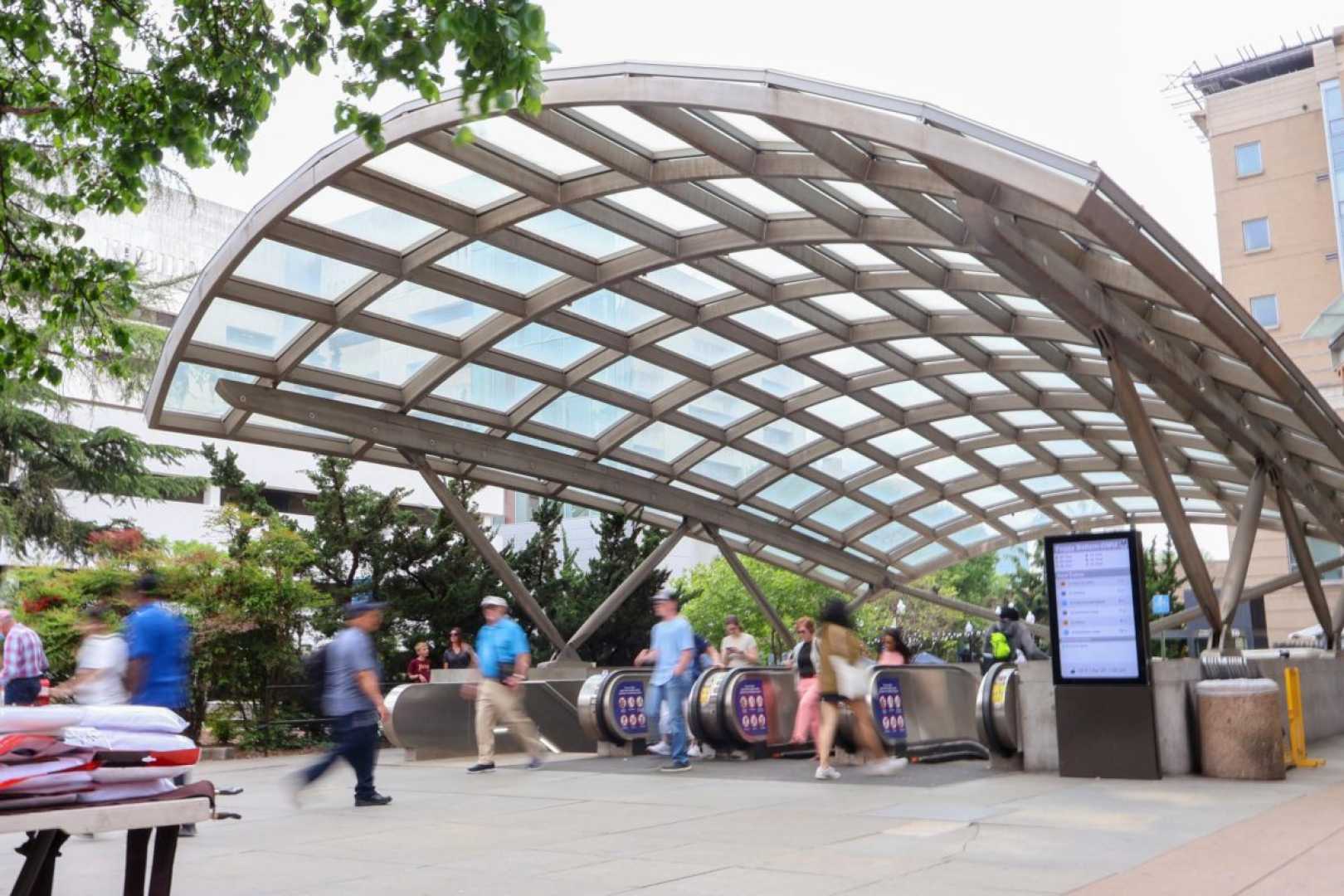News
D.C. Metro Plans Second Entrance for Foggy Bottom Station

WASHINGTON, D.C. — As ridership on public transportation rebounds in the D.C. area following the COVID-19 pandemic, local officials are considering adding a second entrance to the Foggy Bottom-GWU Metro station. On March 29, the station recorded 25,711 riders, surpassing pre-pandemic levels as federal employees return to work.
The Washington Metropolitan Area Transportation Authority (WMATA) discussed plans for the additional entrance at a committee meeting on Wednesday. The proposal suggests placing the new entrance at the intersection of 22nd and I streets, a plan supported by Foggy Bottom Association President John George, who called it essential for the station’s “comfort and capacity.”
In 2015, the Foggy Bottom and West End Advisory Commission passed a resolution in favor of a second entrance when the station averaged around 22,000 weekday riders. Recent reports show ridership has increased about 10 percent this year compared to 2024, notable during the cherry blossom season when the station saw peaks of over 20,000 riders.
The sole escalator serving the station often leads to crowding during high-traffic days, particularly during popular local events. Although Foggy Bottom has claimed the title of the most popular Metro station for 190 days since 2023, it usually falls behind Metro Center and Union Station when students are on break.
WMATA General Manager Randy Clarke announced plans for a comprehensive study covering potential improvements, including the second entrance at Foggy Bottom. “We’re starting the baseball game today,” he remarked during the Board of Directors meeting.
Clarke outlined that the cost of constructing the entrance was previously estimated at $21.2 million in 2007. In addition, the upcoming 2026 budget will include service increases, which aim to enhance transit frequency and explore automatic train operations on various lines, extending beyond the Red Line.
George highlighted that the Foggy Bottom area is now eligible for funds from the Foggy Bottom and West End Main Streets program, which aims to attract businesses and support public improvements. He acknowledged the importance of collaboration with university authorities concerning the strategic planning for the new entrance.
In past meetings, officials explored how land use plans could allow developers to integrate improvements benefiting the community. Concerns among local business owners include efficient marketing and the attraction of customers – challenges exacerbated by declining retail in nearby areas.
<p“It’s important for Metro to align plans with community needs,” George said. “Increased ridership means more customers.” He also pointed out that Metro needs to address previous projects that were abandoned, such as the proposed transitway by the D.C. Department of Transportation.
In a 2010 interview, Michael Akin from the university stated that the 2007 Foggy Bottom Campus Plan would not obstruct the installation of necessary Metro infrastructure. The 2007 study found the station inadequate for emergency evacuations based on potential future ridership growth by 2030.
As plans are revisited, local leaders and community members remain vigilant about entering a new chapter of public transit development in Foggy Bottom.












